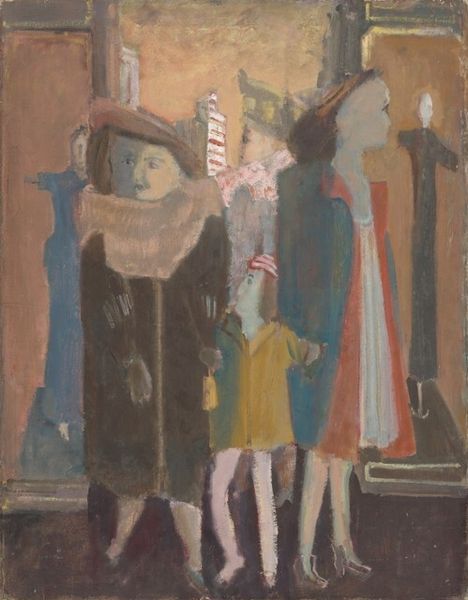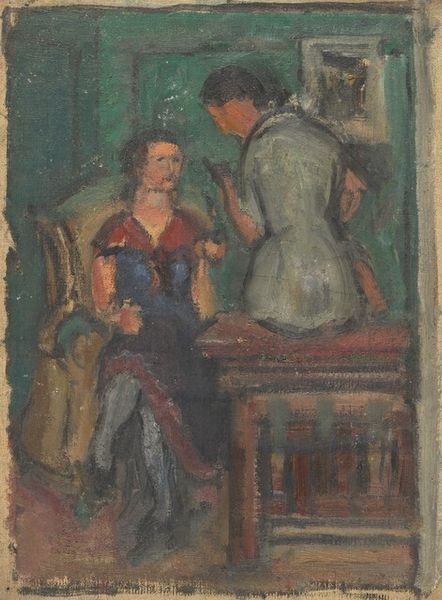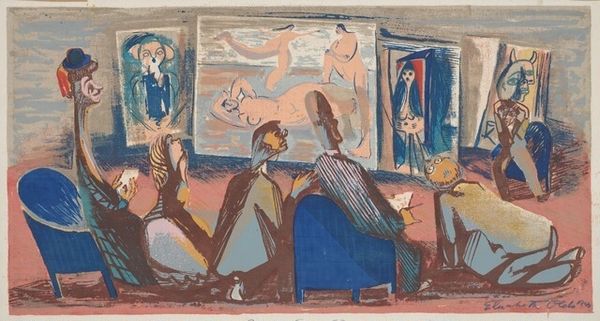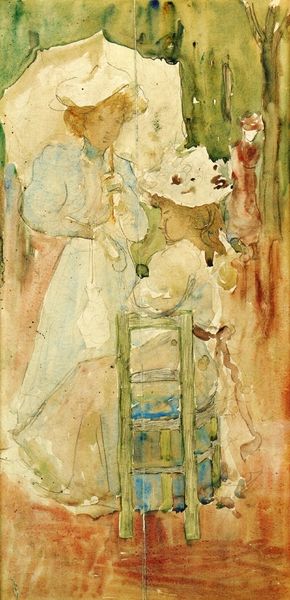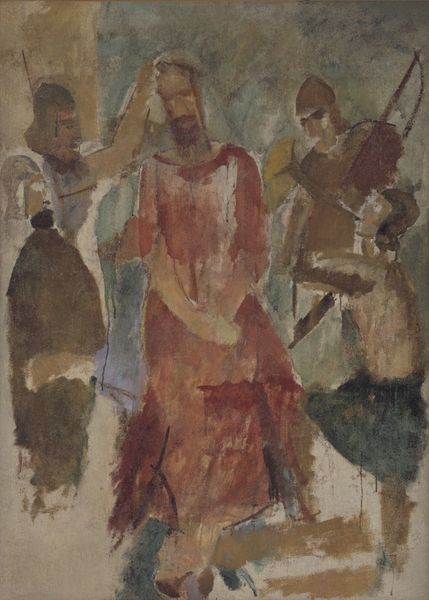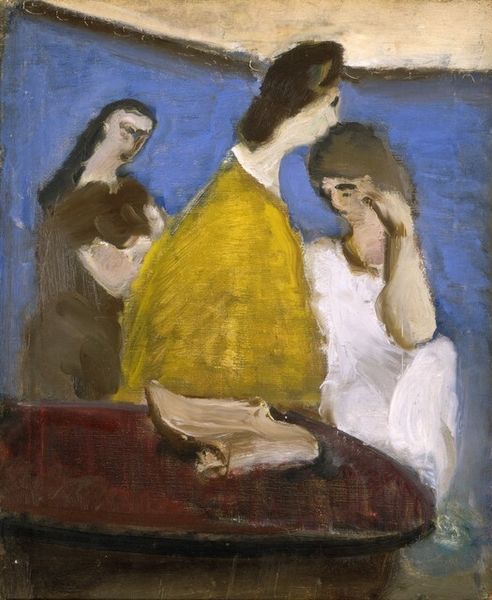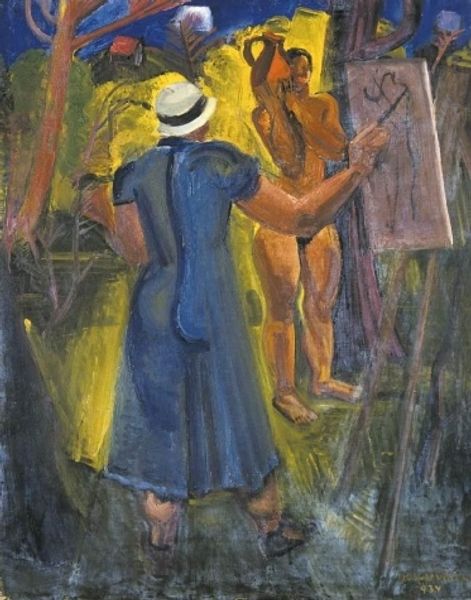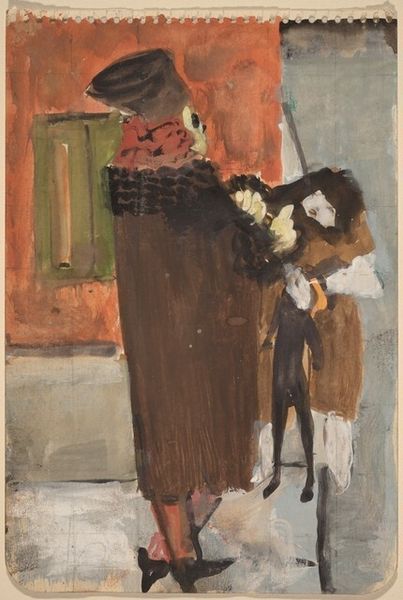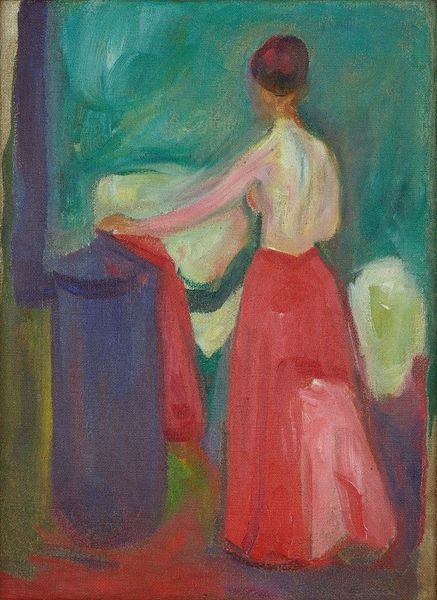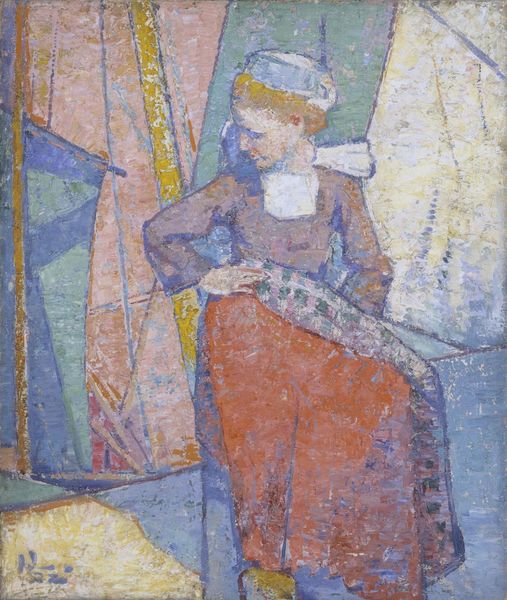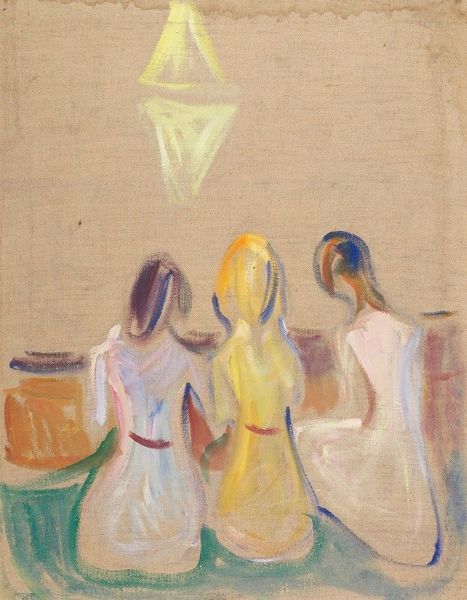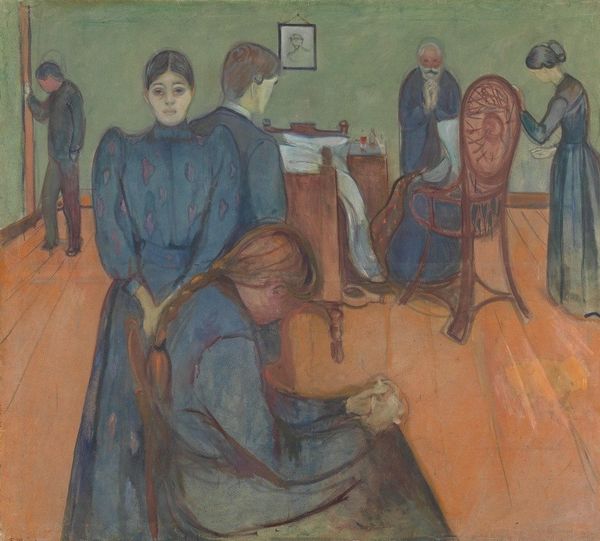
painting, watercolor
#
byzantine-art
#
water colours
#
narrative-art
#
painting
#
watercolor
#
group-portraits
Copyright: Public domain
Editor: We’re looking at “Yaroslavna's Lament,” a watercolor painting made in 1915 by Mykhailo Boychuk. There’s a feeling of sadness here, emphasized by the limited color palette and stylized figures. What elements jump out to you when you see it? Curator: It’s fascinating how Boychuk marries Byzantine art traditions with a clear Modernist lens. Consider the materiality; watercolor itself offers a delicacy that reflects the emotional weight of Yaroslavna's lament. It wasn’t a high-art medium, traditionally, so its use is a pointed decision about value. How does Boychuk use this accessible, even domestic, medium to tell this narrative? Editor: So, you’re saying the choice of watercolor, usually for more casual art, adds a layer of accessibility or… democratisation? Curator: Precisely. Think about it - Byzantine art was often associated with the elite, using expensive materials like gold leaf and tempera. Boychuk chooses watercolour. He's directly engaging with the means of production here, flattening that hierarchy and allowing broader access to the emotional core of this historic lament. It challenges the perceived boundaries between "high" and "low" art. Consider also how readily accessible watercolour paints would be at this time – its place in the artistic production is a statement in itself. Editor: That makes me think about the figures’ almost intentionally rough edges – there’s a directness there too, in the application, as if the act of creating this scene, using those specific materials, matters as much as the final product. Curator: Exactly! We are meant to contemplate the process, the materials themselves and their social accessibility, alongside the lament they represent.
Comments
No comments
Be the first to comment and join the conversation on the ultimate creative platform.
